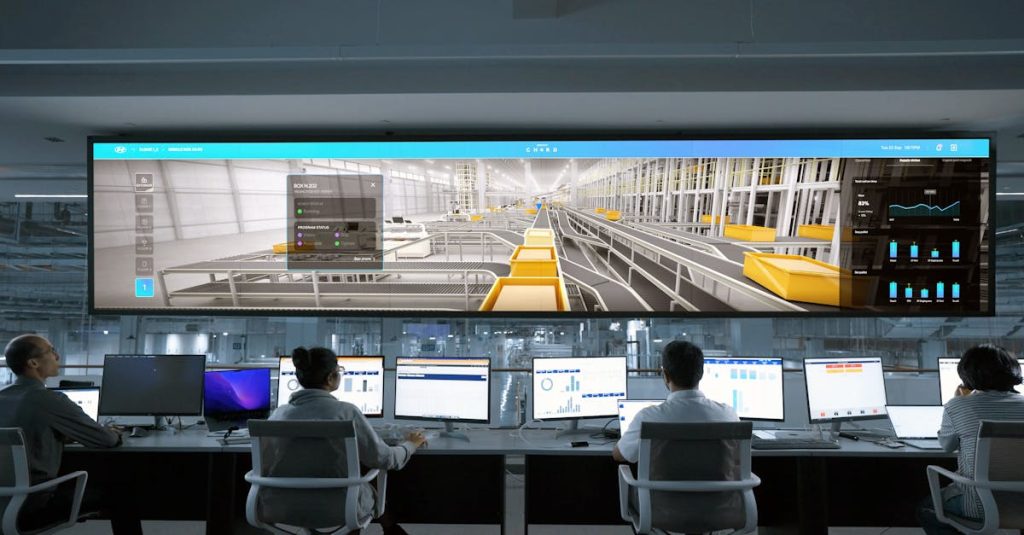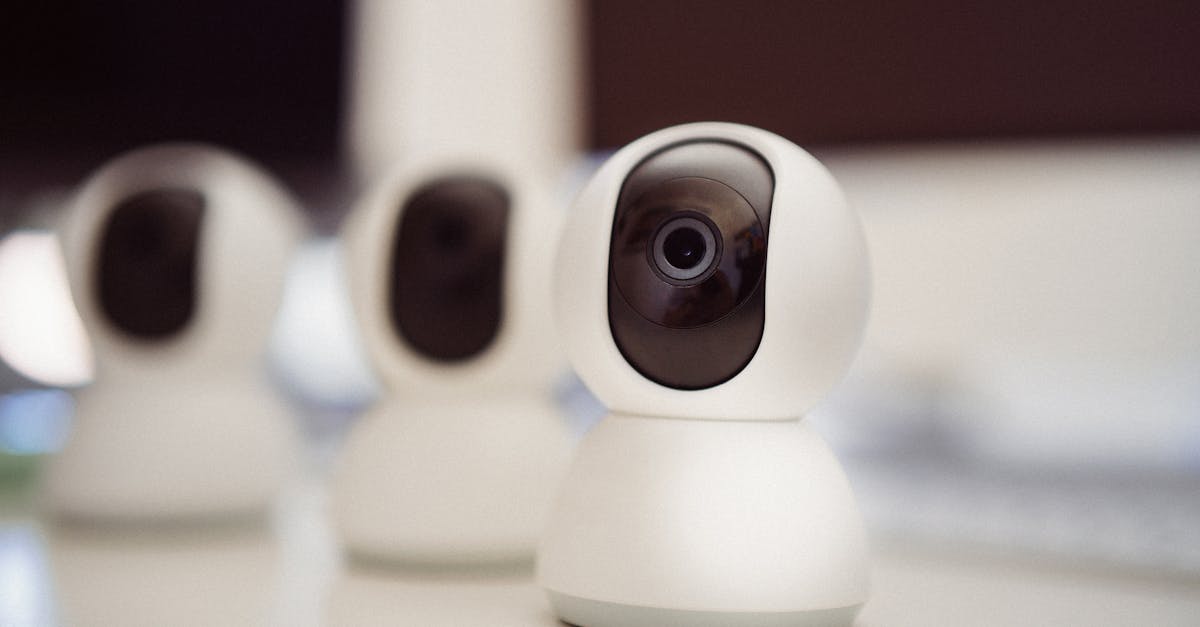Network Setup for Security Devices
In today’s digital age, the significance of a robust network setup for security devices cannot be overstated. As homes and businesses increasingly rely on interconnected systems for surveillance, alarm monitoring, and access control, the foundation of these systems lies in a well-structured network. A properly configured network ensures that security devices communicate effectively, providing real-time data and alerts that are crucial for maintaining safety.
Without a solid network setup, even the most advanced security devices can become ineffective, leaving properties vulnerable to breaches and intrusions. Moreover, a well-planned network setup enhances the overall performance of security devices. It minimizes latency and ensures that data transmission is swift and reliable.
This is particularly important for devices such as cameras and motion sensors, which require immediate feedback to function optimally. A compromised network can lead to delays in alerts or even complete system failures, which can have dire consequences. Therefore, understanding the importance of network setup is the first step toward creating a secure environment, whether for residential or commercial purposes. Enhance your peace of mind with Alpha Security Corp’s tailored Residential Security Services.
Key Takeaways
- Proper network setup is crucial for the effectiveness of security devices
- Choose security devices that are compatible with your network and meet your specific needs
- Careful planning and design of your network setup is essential for optimal security device performance
- Implementing strong security protocols is necessary to protect your devices and network
- Integration of security devices with existing infrastructure should be seamless and efficient
Choosing the Right Security Devices for Your Network
Selecting the appropriate security devices is a critical aspect of establishing a secure network. The market is flooded with various options, ranging from basic cameras to sophisticated alarm systems, each designed to meet different security needs. When choosing security devices, it is essential to consider factors such as the size of the property, specific security concerns, and budget constraints.
For instance, a large commercial space may require multiple high-definition cameras with advanced features like night vision and motion detection, while a small residential property might only need a few basic cameras and a simple alarm system. Additionally, compatibility with existing network infrastructure is another vital consideration. Not all security devices are created equal; some may require specific protocols or bandwidth to function effectively.
It is crucial to ensure that the chosen devices can seamlessly integrate into your current network setup without causing disruptions. Consulting with professionals who specialize in security systems can provide valuable insights into which devices will best suit your needs and how they can be integrated into your existing infrastructure.
Planning and Designing Your Network Setup for Security Devices

Once you have selected the appropriate security devices, the next step is to plan and design your network setup. This involves mapping out where each device will be located and how they will connect to the network. A well-thought-out design not only enhances the effectiveness of the security system but also ensures that all devices are easily accessible for maintenance and troubleshooting.
Factors such as Wi-Fi coverage, power sources, and potential obstructions should be taken into account during this planning phase. In addition to physical placement, it is essential to consider the logical structure of your network. This includes determining how devices will communicate with each other and with any central monitoring systems.
For instance, setting up a dedicated VLAN (Virtual Local Area Network) for security devices can help isolate them from other network traffic, improving performance and security. By carefully planning and designing your network setup, you can create a robust framework that supports your security devices effectively.
Implementing Network Security Protocols for Your Devices
With the increasing sophistication of cyber threats, implementing robust network security protocols for your security devices is paramount. This involves establishing measures to protect your network from unauthorized access and ensuring that data transmitted between devices remains secure. Basic steps include changing default passwords, enabling encryption protocols like WPA3 for Wi-Fi networks, and regularly updating device firmware to patch vulnerabilities.
Moreover, employing firewalls and intrusion detection systems can provide an additional layer of protection against potential threats. These tools monitor network traffic for suspicious activity and can alert you to potential breaches before they escalate into serious issues. By prioritizing network security protocols, you not only safeguard your security devices but also protect sensitive data that may be transmitted through your network.
Integrating Security Devices with Existing Network Infrastructure
Integrating new security devices with existing network infrastructure can be a complex process that requires careful consideration. It is essential to ensure that new devices do not disrupt the functionality of current systems while also enhancing overall security. This may involve upgrading certain components of your network, such as routers or switches, to accommodate increased bandwidth demands from additional devices.
Furthermore, compatibility issues may arise when integrating different brands or types of security devices. To mitigate these challenges, it is advisable to choose devices that adhere to common standards and protocols. This not only simplifies integration but also ensures that all components can communicate effectively within the network.
By taking a strategic approach to integration, you can create a cohesive security system that operates seamlessly across your entire infrastructure.
Testing and Troubleshooting Your Network Setup for Security Devices

After setting up your network and integrating your security devices, it is crucial to conduct thorough testing to ensure everything functions as intended. This involves checking each device’s connectivity, verifying that alerts are being sent correctly, and ensuring that video feeds are clear and accessible. Regular testing helps identify any potential issues before they become significant problems, allowing for timely interventions.
In addition to initial testing, ongoing troubleshooting is essential for maintaining optimal performance. This may involve monitoring network traffic for unusual patterns or addressing connectivity issues as they arise. Keeping detailed records of any problems encountered and their resolutions can also aid in future troubleshooting efforts.
By prioritizing testing and troubleshooting, you can ensure that your security system remains reliable and effective over time.
Monitoring and Managing Your Security Devices on the Network
Effective monitoring and management of your security devices are vital for maintaining a secure environment. This involves regularly reviewing device performance, checking for software updates, and ensuring that all components are functioning correctly. Many modern security systems offer centralized management platforms that allow users to monitor multiple devices from a single interface, making it easier to stay informed about the status of your security setup.
Additionally, proactive management includes setting up alerts for specific events or anomalies within your network. For example, if a camera goes offline or an alarm is triggered unexpectedly, receiving immediate notifications allows you to respond quickly to potential threats. By actively monitoring and managing your security devices, you can enhance your overall security posture and ensure that your property remains protected.
Seeking Professional Assistance for Security System Installation in Sydney
While many individuals may feel confident in setting up their own security systems, seeking professional assistance can provide significant advantages. Experts in security system installation possess the knowledge and experience necessary to design and implement effective solutions tailored to specific needs. In Sydney, companies like Alpha Security Corp offer comprehensive services that encompass everything from initial consultations to ongoing support.
Alpha Security Corp specializes in providing tailored residential and commercial security solutions you can trust. Their team understands the intricacies of network setups for security devices and can ensure that all components work harmoniously together. With their 100% risk-free service guarantee, clients can feel confident in their investment in safety.
For those looking to enhance their peace of mind with reliable security systems, contacting Alpha Security Corp for a free estimate is an excellent first step toward achieving a secure environment. In conclusion, establishing a secure environment through effective network setup for security devices requires careful planning and execution. From understanding the importance of a robust network to selecting the right devices and implementing stringent security protocols, each step plays a crucial role in ensuring safety.
By prioritizing these elements and considering professional assistance when needed, individuals can create a comprehensive security solution that protects what matters most.










